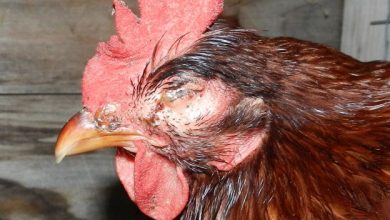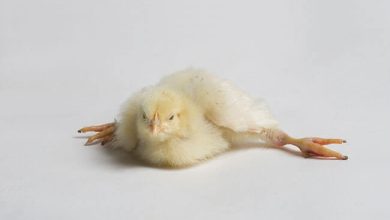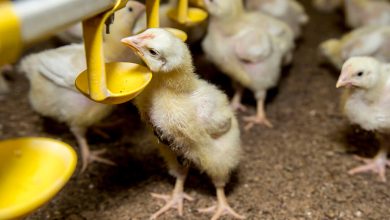Herbs and Spices: A Sustainable Alternative to Antibiotics in Poultry
N. Chaudhury1, S. Sathapathy1*, N. Dahariya1 and S. K. Joshi2
1Department of Anatomy and Histology, CVSc. and A. H., OUAT, Bhubaneswar – 751 003
2Scientist (Animal Science), KVK, Jharsuguda, OUAT, Bhubaneswar – 751 003
Introduction
The ban of antibiotic use in the threat of emerging pathogens and an ever-increasing demand for poultry products all put pressure on the need for sustainable therapeutic aids in poultry production. Herbs and spices, in their various forms, offer multiple benefits for poultry health and production. It is important to understand that they can be added to animal diets in different forms and preparations. They can be given in whole or as extracts such as essential oils or phytogenics. There are several reports of consumers who prefer poultry that’s been fed natural ingredients as substitutes for antibiotics. A recent survey (April, 2018) carried out in Thailand, for example, indicated that Thai consumers are ready to buy meat products raised with phytogenic feed additives. Phytogenic feed additives are standardized mixtures of herbs and spices, as well as other plants and their extracts. Phytogenics are used for their impact on animal wellness, gut health and greenhouse gas emissions.
Use herbs and spices
They are cost effective, easily available, no known residual effects and no risk of developing antibiotic resistance in the human beings who consume the meat. Adding herbs and spices to feed has an effect on digestive enzymes which results in an overall improvement in performance parameters such as weight gain and feed conversion. They also offer several health benefits including immune stimulation, anti-bacterial, coccidiostatic, antiviral or anti-inflammatory activity and anti-oxidant properties.
Anti-microbial property
Herbs and spices contain flavonoid components such as baicalin, baicalein, limonene, cinnamaldehyde, thymol, carvacrol or eugenol, among others, which exert antimicrobial effects. They act as antimicrobial agents by changing the characteristics of cell membranes, and causing ion leakage, ultimately making microbes less virulent.
Anti-Bacterial property
They act in the bacterial cell-wall structure, denaturing and coagulating proteins.
Anti-parasitic property
Several herbs such as sage, garlic, thyme, echinacea and oregano, possess anti-coccidial properties against Eimeria species, which reduce oocyst excretions from infected birds. Curcuma longa (turmeric), through its phenolic compound, curcumin, exerts its anti-coccidial effect in birds through its anti-oxidant action on the immune system. Aqueous extract of garlic and cinnamon oil have both been shown to be effective in decreasing lice and mice infestations in chickens.
Anti-viral property
Herb catechins, which are a type of natural phenol, administered through feed or drinking water, decrease replication and excretion of the H9N2 virus from chickens in a dose-dependent manner. The anti-influenza activity of catechins is mainly due to direct interaction with viral HA and the inhibition of viral RNA synthesis. Ginseng stem and its leaf saponins significantly increase the serum antibody response to Newcastle disease and inactivated H5N1 and H9N2 vaccines in chickens.
Anti-oxidant properties
The use of herbs reduces oxidative stress in chickens. Thyme, ginger, turmeric, marjoram, peppermint and nutmeg have anti-oxidant properties as they contain compounds such as polyphenolics, alkaloids, lignans, flavonoids and terpenoids. These compounds neutralize superoxide, hydrogen peroxide and nitric oxide by increasing the production of enzymes such as catalase, superoxide dismutase and glutathione peroxidase.
Stimulation of immune system
Herbs and spices are rich in flavonoids, vitamin C and carotenoids that increases immunity in birds. Some of these plants include echinacea, liquorice, garlic and cat’s claw. These plants can improve the activity of lymphocytes, macrophages and natural killer cells; they increase phagocytosis or stimulate the interferon synthesis.
Conclusion
Feeding herbs to broilers stimulate the secretion of digestive enzymes, and thus improve nutrient digestibility and enhance the performance of birds. The utilization of herbs and spices has a high economic efficiency. They possess several health-promoting properties that include antimicrobial, anti-parasitic, anti-oxidant and immunomodulatory properties. They possess several health-promoting properties that include antimicrobial, anti-parasitic, anti-oxidant and immunomodulatory properties. The improved parameters of meat yield are induced by the stimulating effect of bioactive compounds on protein and fat metabolism. Overall, herbs and spices offer sustainable therapeutic and performance aids to poultry health and production.





This thepoultrypunch.com and Herbs and Spices: A Sustainable Alternative to Antibiotics in Poultry article
has helped me a lot, is very well written, I’m glad I found it.
My friend AlissaBegin and I used best weight loss product: https://s96.me/fit and we reached the ideal weight.
I’m so happy now! 🙂 Kiss you all!
This Herbs and Spices: A Sustainable Alternative to Antibiotics in Poultry site has helped
me many times in health problems. This book helped me to heal
and feel better: https://s96.me/herbal-remedies Kiss you all!
This Herbs and Spices: A Sustainable Alternative to Antibiotics in Poultry
site has helped me many times in health problems.
This book helped me to heal and feel better: https://s96.me/herbal-remedies
Kiss you all!
Hi, the Herbs and Spices: A Sustainable Alternative to Antibiotics in Poultry article it is well written and has
helped me a lot.
Let me share with you a product that helped my mother lose 62
lbs of raw fat: http://bit.ly/lose-1lb-of-fat-every-72-hours
Be beautiful! Be happy! 🙂 Kiss you All!